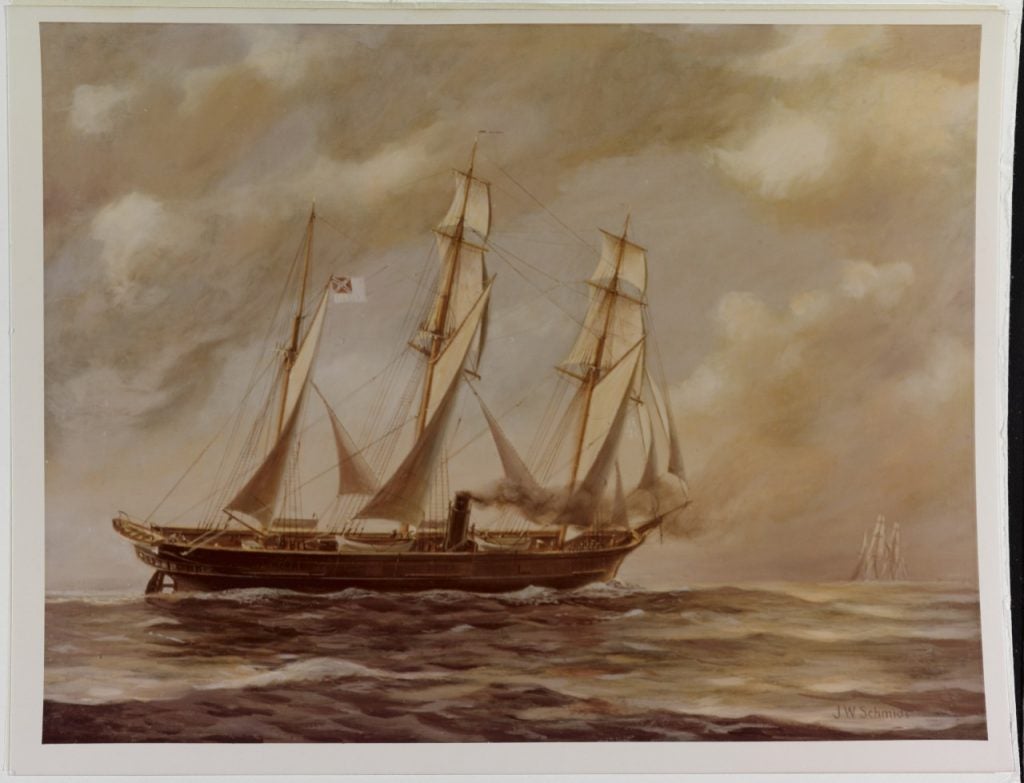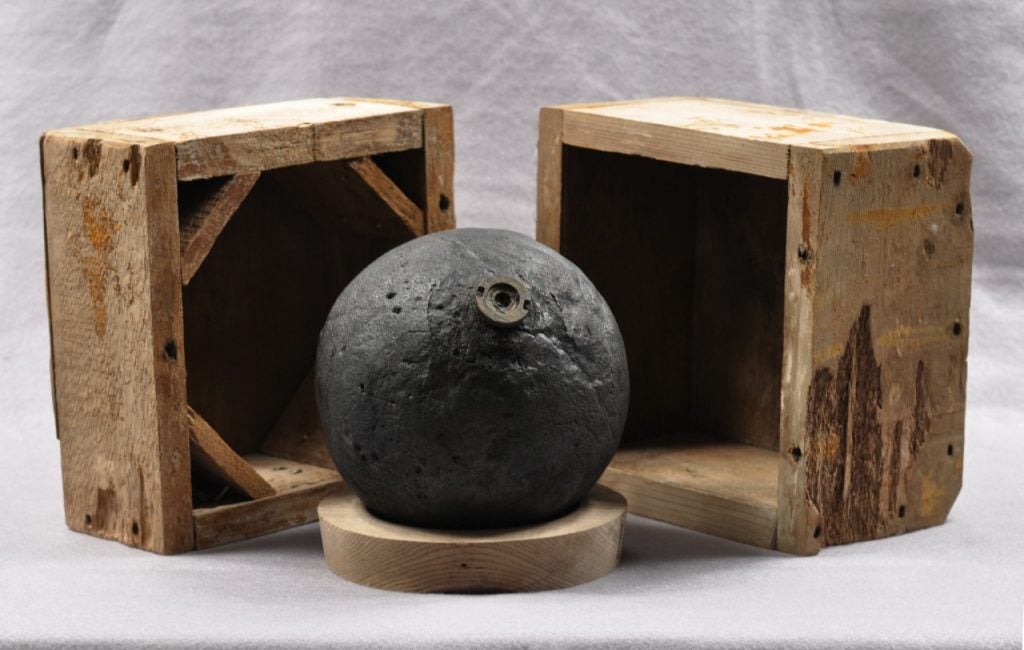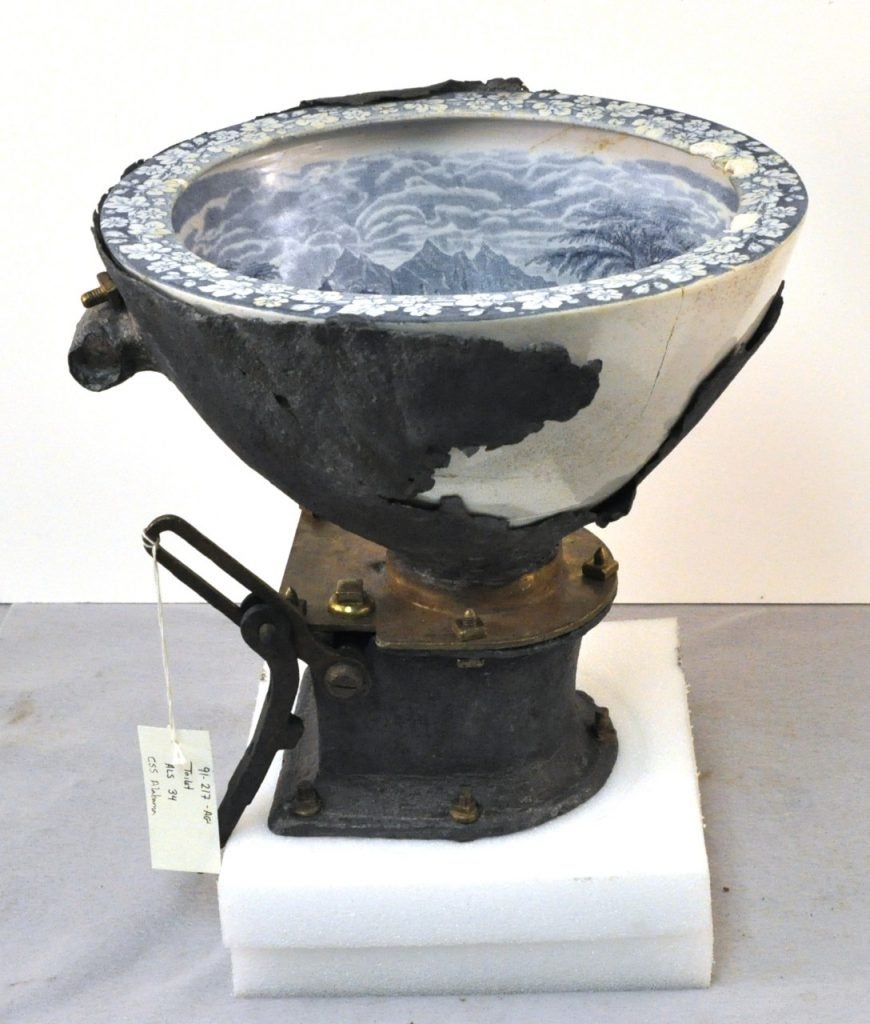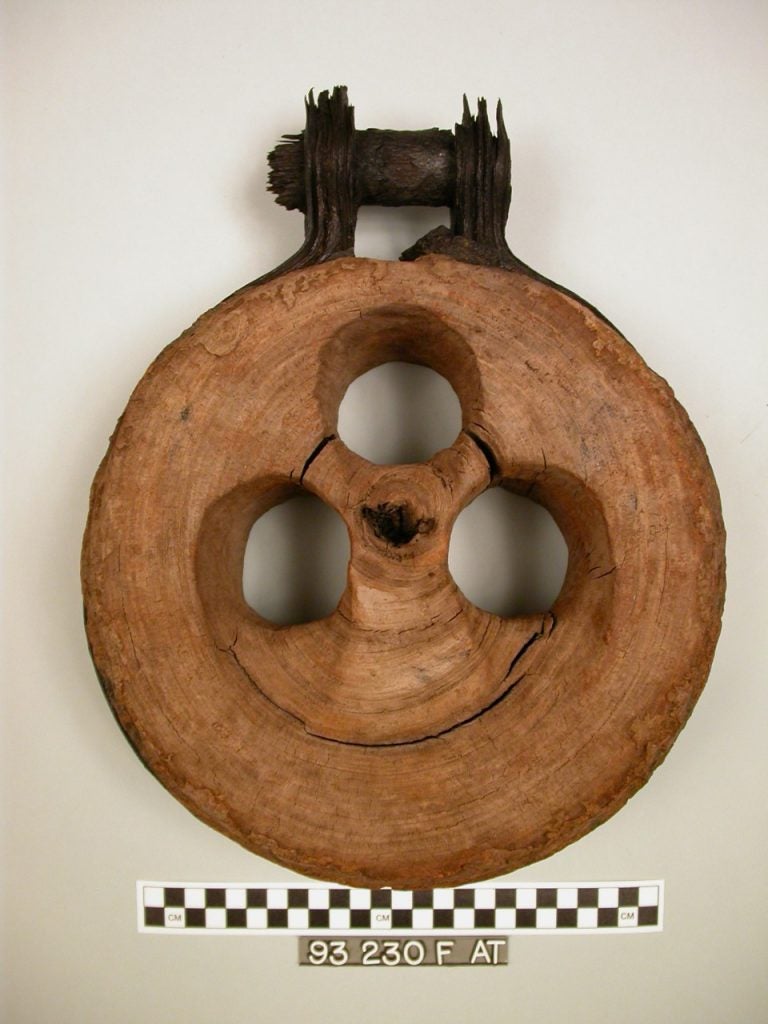
Image courtesy of Naval History & Heritage Command.
CSS Alabama holds a special place in American history as perhaps the most famous Confederate commerce raider. During the ships brief twenty-two month career, Captain Raphael Semmes and his crew sailed across the North Atlantic, Caribbean, along the coast of Africa, around the Cape of Good Hope, into the Bay of Bengal and the Malacca Straits, before returning to Cherbourg, France where the raider would finally be sunk. During their travels, Alabama boarded 447 vessels, captured 65 Union merchant ships, and took 2,000 prisoners with no loss of life. In addition to capturing prizes, Alabama sunk the Union blockade gunboat, USS Hatteras, off Galveston in January, 1863.
When Alabama left Cherbourg port on 19 June 1864, the Union sloop-of-war, Kearsarge, was waiting, just outside of the harbor. The brief engagement lasted around an hour, and saw the Alabama sink to the bottom of the English Channel. While most of the crew were captured from the water by Kearsarge, Captain Semmes and a handful of others were rescued by an English yacht and escaped. The wreck of Alabama lay dormant for 120 years until it was discovered by a French navy minesweeper on 30 October 1984. The French Navy appointed underwater archaeologist, Max Guerout, to conduct an identification of the vessel, which was confirmed in 1988. Issues over sovereignty of the wreck were resolved in 1989 with an international agreement between France and the United States, which established a joint Franco-American Scientific Committee to oversee investigation of the wreck.
The first American archaeology team visited the site in June 1993, and consisted of members from the National Park Service’s Submerged Resources Center. From 1988 to 1995, yearly investigation of the site continued to fall under the direction of Max Guerot and the French Navy. A non-profit, Association CSS Alabama, was established to conduct archaeological research on the site, with the cooperation of the Naval History and Heritage Command in conjunction with the French Navy. Field seasons continued throughout the 90s, into the early 2000s, with the last season completed in 2002. At the end of the 2002 field season, directed by primary investigator Dr. Gordon P. Watts, over 300 artifacts had been removed from the site for further conservation, including, “the ship’s bell, structural samples, tableware, ornate commodes, and numerous other items that reveal much about life aboard the Confederate warship” (CSS Alabama Association, 2004). The artifacts removed have been sent to several facilities for conservation, including Archéolysse International Underwater Conservation Lab in France, Texas A&M’s Conservation Research Laboratory, the Warren Lash Conservation Center in Charleston, South Carolina, and the NHHC Archaeology and Conservation Lab in Washington, DC, where most of the collection is currently held.

Post-conservation photograph of a cannon ball and storage box recovered from the wreck of CSS Alabama. Image courtesy of Naval History & Heritage Command.

A flushing toilet with a transfer-printed toilet bowl set in a lead base. Image courtesy of Naval History & Heritage Command.

A three-holed wooden deadeye was used in the standing and running of rigging for sailing. This is considered a composite artifact with both wood and metal making the conservation treatment process more difficult. Image courtesy of Naval History & Heritage Command.
Connor McBrian, 2017.
